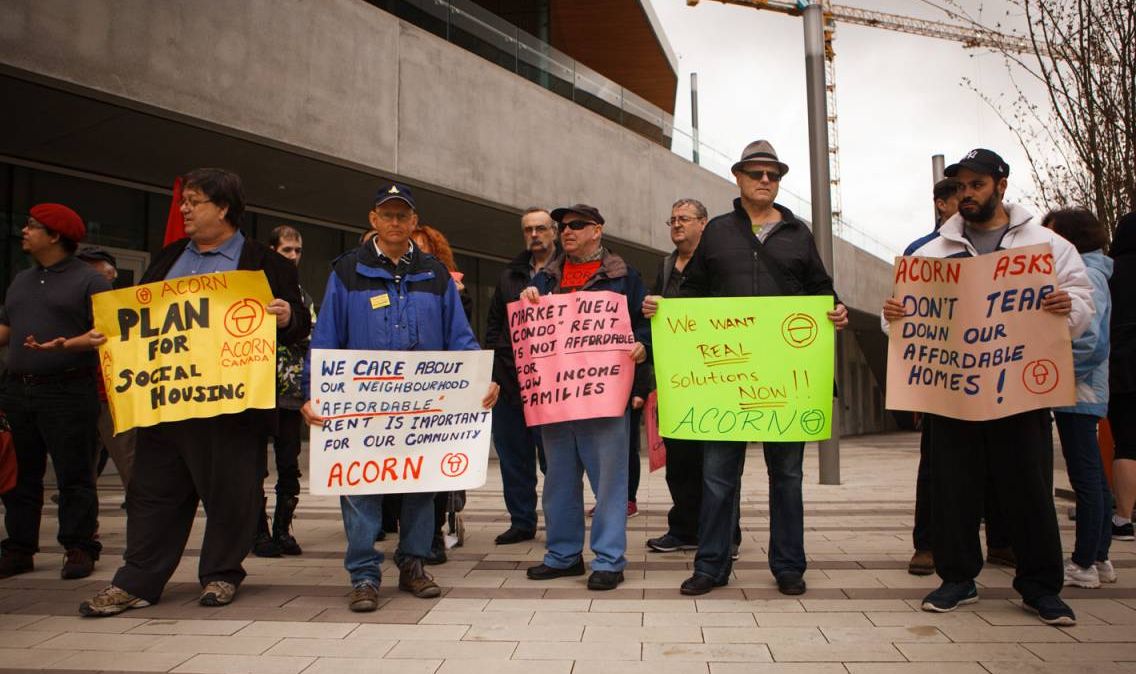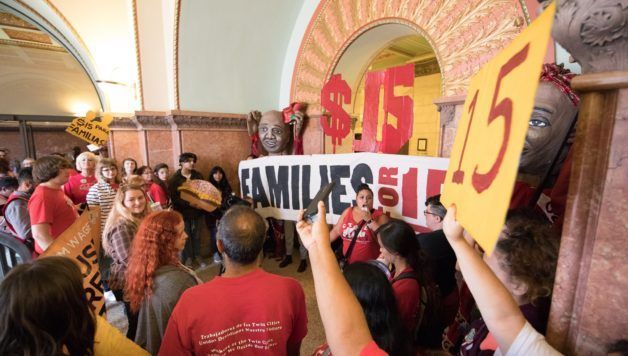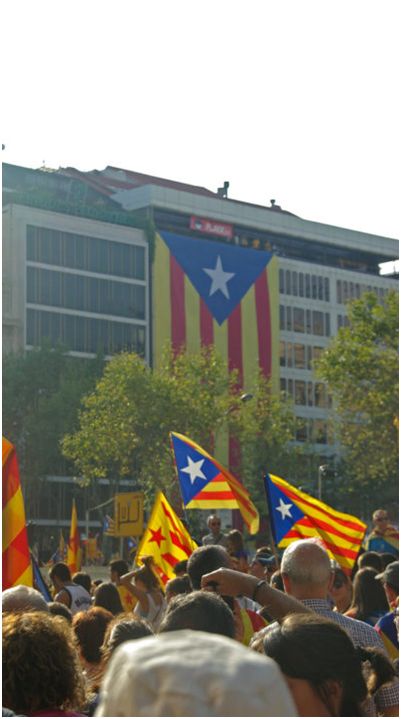The city of Surrey is the second largest in British Columbia, with nearly 600,000 mostly working-class residents. It is home to families from Canada and dozens of other countries and is host to some of the largest multi-ethnic celebrations in Canada, including the massive annual Vaisakhi parade of up to half a million people, a cornerstone celebration of the world’s largest Sikh community outside of India. There is also a yearly Pride parade that ranks among the most energetic and radical in the country, industry and agriculture, one of the largest marine terminals in North America, and beautiful natural spaces. Surrey also often makes the news for the wrong reasons: salacious stories of drug- and gang-related crimes are a long time feature of local news, despite Surrey’s numbers on violent crime being only slightly above regional and national averages (the city’s rate of property crime is significantly above average). But there is another, far more pernicious and systemic form of crime that does not get nearly as critical a media spotlight. Much like its neighbouring Vancouver to the west, as well as cities across the country, Surrey has a homelessness crisis and a massively overinflated and unaffordable housing market.
Like other suburbs in Canada, housing costs in Surrey have skyrocketed in recent years, including since the start of the COVID-19 pandemic. Surrey and other suburban areas have long been the “affordable” option for people who can no longer afford to live in a city centre or who want a bit more living space. This is rapidly changing. While rents in the cities of Vancouver and Toronto proper have slightly decreased since spring of last year, Surrey’s average one-bedroom apartment listing has gone up 12 percent in the past 15 months, and an amazing 71 percent in the past five years – from an average of $850/month in June 2016 to $1,358/month now. If you’re a family in the market for a three-bedroom apartment, be prepared to pay 112 percent more than what you would have five years ago – that average has gone from $1,200 to $2,550/month.
Perhaps you want to avoid the rent game and get the comparative stability of owning a home. Even though your parents may have been able to turn this trick, many today are essentially out of luck. Surrey’s average detached home sale price has now cracked $1 million, with a townhouse averaging over $750,000. Accompanying this explosion in prices have been four decades of near-stagnant wages.
This is what “the market” does, and we cannot rely on it to do anything but further bloat profits for developers and big landlords.
This is where the public sector can and must make a large intervention for working people in need of homes.
Low bars not cleared
In 2017, in something of a reversal of the Liberal party’s 1996 killing-off of any significant federal investment in public housing, Justin Trudeau’s federal Liberal government triumphantly announced the National Housing Strategy (NHS) to fund affordable housing, to the tune of a seemingly impressive $40 billion. After the Fall Economic Statement of 2020, the program’s total funding was pushed beyond $70 billion. Even that number sounds less groundbreaking when we consider that it’s for a country of nearly 40 million people, and that it’s spread out over ten years – the federal government is committing less than $200 per person per year to one of the country’s most immediate and talked-about crises. (This NHS also contains major handouts and incentives to private developers, which it is not the purpose of this article to explore.) Part of the funding is for a new $1 billion Rapid Housing Initiative to create up to 3,000 permanent and affordable units across the country. Surrey’s allotted share of this money is $16 million – a pittance when dealing with the monster of unaffordable housing, even by capitalism’s pitiable standards.
BC’s provincial NDP government has fared little better. Though some new modular housing for homeless people in several communities has addressed a small amount of the damage caused by 16 years of BC Liberal housing policies, John Horgan’s tenure as BC premier has so far yielded barely 3,000 of the 118,000 new affordable housing units that his party’s election platform promised in 2017.
With neglect of public housing compounding since the 1980s, a December 2019 report from the Canadian Centre for Policy Alternatives (CCPA) suggests that Metro Vancouver needs 10,000 new non-market rental units per year – that is, 10,000 beyond the splashy $700,000 condos and $2,500-per-month rental apartments that the private developers are building now. Let us take a sufficient percentage of that as a target for Surrey: 2,500 units per year. This is a total that would double the city’s non-market rental stock, which stood at 5,189 units as of 2018, in less than three years.
How can public housing be won?
Obviously, the right-of-centre Surrey city government, with a mayor and councillors whose electoral campaigns were heavily funded by property developers and other big-business interests, are not immediately going to jump at the chance to institute a significant new public program, in spite of how popular or needed it might be. Major public pressure will be necessary.
Although direct donations by corporations and unions are no longer permitted in BC provincial and municipal politics as of 2017, the donor lists of current Surrey politicians from the municipal election year of 2014 are eye-opening and show the allegiances of the city’s government. Current mayor Doug McCallum and his Safe Surrey Coalition party, in his unsuccessful run for the mayor in that year (he’d previously been mayor from 1996 to 2005), raked in over $230,000 in corporate money, including five-figure investments from big developers Wesgroup and Sunmark and $2,000 from Teal-Jones Group, the company that was infamously cutting down some of the world’s last old-growth temperate rainforest at Fairy Creek on Vancouver Island until earlier this month. Safe Surrey currently has a majority (the mayor plus four councillors) on the nine-seat Surrey City Council. (Three other councillors elected as Safe Surrey candidates have since left the party.)
Union locals, whose members are weighed down by out-of-control housing costs and often must travel long distances to work from their homes in somewhat more affordable neighbourhoods or municipalities, can play a leading role in calling for the building of 2,500 non-market housing units. Longshore workers and teachers in Surrey have been especially militant in recent times. Housing non-profits and community groups can follow labour’s lead if labour takes it.
Winning 2,500 public homes per year will also require public resources. The CCPA report estimates an average building cost of $250,000 per unit, which would make for a total of $625 million per year. For one city of approximately 600,000 people, that is significant. How should this $625 million be raised? There’s a simple and effective solution: tax the rich.
In order to come up with funds to build affordable housing, Surrey can mirror the proposal put forward by Vancouver’s Coalition of Progressive Electors city councillor Jean Swanson: a progressive property tax, popularized under the name “mansion tax.” Swanson officially represents Vancouver, but her message has potency nationwide. The mansion tax is not complicated to understand. It is a simple graduated tax on residential property, based on progressive tax principles where the rich pay more, and the poor pay less.
Swanson proposed to tax home value assessed between $5 million and $10 million at an extra one percent, and that above $10 million an extra two percent. We propose a similar but larger plan, taxing home value between $4 million and $8 million at an extra one percent, between $8 and $12 million at an extra two percent, and so on until value over $20 million is taxed at an extra five percent. According to data published by the City of Surrey, there are currently only 802 properties, with a combined worth of $7.25 billion, that would be hit by this tax, but these properties would raise approximately $195 million in the tax’s first year. This would not be all the money needed, but the Surrey municipal government committing to this would be paired with a demand that the provincial and federal governments, with their much greater resources (and as is typical for such projects), make up the difference. The tax revenue generated here might not make the owners of the mansions which dot the landscape of Surrey’s pricier neighbourhoods happy, but it will make a significant step towards providing funding towards eradicating homelessness and adding large amounts of stable, truly affordable housing in all neighbourhoods of the city.
What gets built?
The first priority of the new money must go toward ending Surrey’s homelessness crisis –without ifs, ands, buts, or Trudeau’s call to merely “reduce chronic homelessness by 50 percent” after a decade. Official statistics claim 644 street homeless people in Surrey at last count, however Surrey city councillor Brenda Locke and others have pointed out that actual numbers are likely two or three times this amount due to under-reported data. The first year’s worth of mansion tax funding would pay for enough modular housing (with on-site assistance) to get every last homeless person out of tents and doorways and into a safe environment.
The city’s own response to homelessness has been nothing short of shambolic. In the winter of 2019 (the most recent year for which statistics are available), there were nine Extreme Weather Response shelters in all of Surrey and the small neighbouring city of White Rock, with a total of 143 mats for adults and just 10 for children. Incredibly, during the COVID-19 pandemic, the city planned only five shelters (two in Whalley and one in each of Cloverdale, Fleetwood, and South Surrey) with 52 mats for adults and six for children. There were extreme weather alerts on 99 nights between October 29, 2019 and March 25, 2020. This is capitalist barbarism in one of its most heartless forms.
Following the building of sufficient modular housing to solve that immediate crisis, 2,500 below-market rental units per year could begin to transform the nature of Surrey housing. Based on community input and the advice of housing advocates, it can be a mix of high-rise, walk-up, townhouse, and other types of housing, for singles, families, seniors, Indigenous people, refugees, survivors of domestic abuse, and others. Surrey especially receives a large number of new immigrants each year, and secure, really affordable housing is a huge help in making their integration into a new life and place easier.
Having a sizeable supply of low-rent public housing (which could also include co-ops built in partnership with community groups) will also put pressure on private landlords, especially the big companies that own tens of thousands of units around the world, to think twice about raising the rents on their properties.
If popular will dictates, the city could even expand the program to include people who wish to own their homes. The Whistler Housing Authority model, currently enjoying success in the mountain resort town north of Metro Vancouver, sets properties apart for purchase, available only to people who are employed or retired in the town, and those who don’t own any other real estate. The people who buy these properties are only allowed to sell them at a price increase equal to the national cost of living, not equivalent to the ski resort’s red-hot property market. Compared to property prices on the market, the homes that are part of the Whistler Housing Authority are sold at less than half. Owners of such homes are happy at the far easier opportunity to own a secure home and don’t think of it as an “investment” to be sold later on at a drastically inflated price, but simply as a home to live in and enjoy. A similar model implemented in Surrey would be of potentially huge benefit. If such homes were sold at slightly above cost, any surplus would simply be reinvested in new public rental housing.
The focus on rental properties, however, is critical. Currently, approximately 30 percent of residential properties in Surrey are rentals, a figure that is going up with time. With the average house price, even in the pandemic, climbing past a million dollars, rental availability takes even more importance.
The status quo is not an option
Working-class people, who are gouged by huge monthly rents – some paying 80 percent or more of their income – in Surrey and nearly everywhere else in the country, are desperate for a solution to this massive problem and want the public sector to move in a big way into this arena in which the market has failed so spectacularly.
Finally, we are well aware that this is not a problem particular to Surrey, or BC, or Canadian cities as a whole. The phenomenon of housing speculation and its ensuing rent-gouging, property-flipping, and disastrous bubbles is a global one and the victories that we’re able to win locally can inspire other, even larger victories from Vancouver to Los Angeles to Dublin.
One can expect Surrey to take small steps towards tackling this crisis, eventually, however they will not be long-term solutions and will certainly fall well short of what is required. The ruling class of Surrey – big business and their politicians alike – will fight any attempt to claw back their power and wealth as hard as they can. That’s why the call must go out for radical proposals, such as the ones put forth above that develop humane living conditions for all Surreyites, and that can inspire ordinary people to join a battle worth winning. Surrey does not need more unaffordable condos built for profit. It does not need more homelessness, more insecurity, and more inequality. It needs housing for all.




